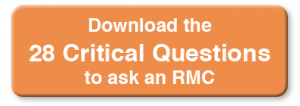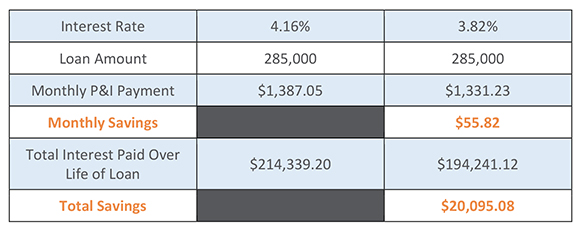Many companies approach their relocation program without a full understanding of what questions they should ask of a Relocation Management Company (RMC). Knowing which critical questions to ask is highly important for a company to get a full understanding of how the RMC will manage their relocation program. Missing critical questions can lead to a large gap in expectations and performance. It is in each party’s best interests to be sure the most important questions are asked, and answers returned for review and decision-making.
Global Mobility Solutions’ team of global relocation experts have identified 28 critical questions that they believe companies should ask an RMC. Answers to these questions will provide the company with the most critical knowledge they need in order to make confident and fully informed choices for their relocation program’s design and functionality.
The following five critical questions are representative samples of the types of questions that you should ask an RMC.
Five Representative Critical Questions:
1. What is your service delivery model?
Fully understanding the RMC’s service delivery model is of paramount importance to understanding how the RMC will manage your company’s relocation program. Purchasing relocation management is a much different process than sourcing parts or equipment. Ensuring the right fit for the right reasons is the most important factor when sourcing employee-facing services.
2. Describe your supplier network. Do you own or are obligated to provide business to your suppliers?
It is important to understand if the RMC owns their suppliers, or are in some way obligated to provide business to their suppliers. If this is the case, transferees may not have the ability to choose the provider they want for their relocation process. In some cases, fully qualified suppliers who would provide lower costs might not be able to provide services.
3. How do you ensure competitive pricing from your supplier base?
This is one of the critical questions that will provide great insight into how the RMC operates. In some cases, RMCs will provide for competitive pricing by opening up bidding to multiple suppliers. In other cases, an RMC will try to explain that they can provide competitive pricing by leveraging their own network and spreading costs over a large number of transferee relocations. Be sure you understand what these different responses actually mean. Either the RMC ensures competitive pricing by promoting competitive bidding, or they do not promote competitive bidding.
4. What metrics and service level agreements do you track and report on?
Service level agreements (SLAs) should be a standard part of an RMC’s quality program. Service quality promises might include on time delivery guarantee of household goods, or specific performance guarantees based on transferee ratings. SLAs might cover real estate services, household goods moving, destination services, and financial and reporting services.
5. How do you utilize technology in your approach to relocation management?
RMCs should have technology to complement their service models. Companies, their transferees, and their candidates should expect a seamless relocation experience. Look for RMCs that can provide a superior, proprietary, cross-platform, online relocation management suite. Systems should provide clients and their transferees an array of decision-making, tracking, and expense management tools, with anywhere, anytime access 365 days a year and 24 hours a day.
What should companies do with the answers they receive?
Companies should compare the answers they receive from each RMC to ensure they provide the desired result. Information should be complete, and the answers should be direct and clear without any cause for confusion. Good responses will help the company determine how the RMC will manage their relocation program. Companies should be sure to ask all 28 Critical Questions in order to get the best overall responses.
Conclusion
Global Mobility Solutions’ team of global relocation experts has helped thousands of our clients with their relocation programs. We can help your company understand which critical questions to ask of an RMC. These questions will help ensure you address the most critical relocation program points. Learn how to choose the best Relocation Management Company from Global Mobility Solutions, the relocation industry and technology experts who are dedicated to keeping you informed and connected. Contact our experts online or give us a call at 800.617.1904 or 480.922.0700 today.











